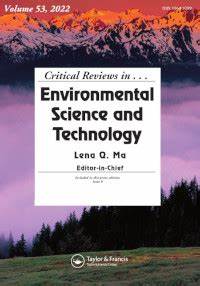合成麝香的环境暴露、代谢转化和人类健康风险综述
IF 11.4
1区 环境科学与生态学
Q1 ENVIRONMENTAL SCIENCES
Critical Reviews in Environmental Science and Technology
Pub Date : 2023-05-31
DOI:10.1080/10643389.2023.2217068
引用次数: 0
摘要
摘要合成麝香(SM)已被广泛用作各种日常消费品的香料成分。由于SM的大规模生产和使用,据报道在环境和人类生物样本中存在SM,这引发了全球对人类健康影响的担忧。这篇综述概述了目前关于人类暴露途径和环境SM内部暴露的知识。还强调了SM在人类中的生物转化。与通过吸入和口服途径暴露相比,含有个人护理产品的SM的皮肤接触是主要途径,占人类SM每日暴露总量的82-93%。SM穿透皮肤屏障后,可被真皮吸收,引起潜在的皮肤刺激。关于人体内部暴露,大约一半的有限研究集中在母乳上,这表明全球弱势群体(如孕妇和婴儿)面临相当大的风险。SM的健康影响是根据现有数据和我们计算的毒理学预测进行协同评估的。根据历史数据分析,SM可引起内分泌紊乱和致突变毒性。我们的计算毒理学数据首次表明对心血管系统有负面影响。然而,在使用现有数据解释不良健康影响时应谨慎,因为在大多数情况下,实验室研究中不同SM的有效毒性剂量大于实际环境浓度。在分析研究进展的基础上,这篇综述还提出了在未来的研究中需要研究长期低剂量暴露与人类健康不良影响之间的关系。图形摘要本文章由计算机程序翻译,如有差异,请以英文原文为准。
A critical review of environmental exposure, metabolic transformation, and the human health risks of synthetic musks
Abstract Synthetic musks (SMs) have been widely used as fragrance ingredients in various daily consumer products. Due to their mass production and usage, the presence of SMs has been reported in environmental and human biological samples, raising global concerns over human health effects. This review outlines the current knowledge on human exposure pathways and internal exposure to environmental SMs. The biotransformation of SMs in humans is also highlighted. Compared to exposure through inhalation and oral ingestion pathways, dermal contact from SMs-containing personal care products is the dominant pathway, accounting for 82–93% of total human SMs daily exposure. After penetrating the skin barrier, SMs can be absorbed by the dermis, causing potential skin irritation. Regarding internal human exposure, around half of the limited studies focused on breast milk, indicating considerable risks for vulnerable global populations (e.g. pregnant women and babies). The health effects of SMs are assessed synergistically based on the existing data and our calculated toxicological predictions. SMs could induce endocrine disruption and mutagenic toxicity according to historical analysis of data. Our computational toxicology data suggested negative impacts on the cardiovascular system for the first time. However, caution should be applied when interpreting adverse health effects using the available data, as the effective toxic doses of different SMs in laboratory studies were greater than actual environmental concentrations in most cases. Based on an analysis of research progress, this review also proposed the need to study the relationship between long-term low-dose exposure and adverse human health effects in future research. Graphical abstract
求助全文
通过发布文献求助,成功后即可免费获取论文全文。
去求助
来源期刊
CiteScore
27.30
自引率
1.60%
发文量
64
审稿时长
2 months
期刊介绍:
Two of the most pressing global challenges of our era involve understanding and addressing the multitude of environmental problems we face. In order to tackle them effectively, it is essential to devise logical strategies and methods for their control. Critical Reviews in Environmental Science and Technology serves as a valuable international platform for the comprehensive assessment of current knowledge across a wide range of environmental science topics.
Environmental science is a field that encompasses the intricate and fluid interactions between various scientific disciplines. These include earth and agricultural sciences, chemistry, biology, medicine, and engineering. Furthermore, new disciplines such as environmental toxicology and risk assessment have emerged in response to the increasing complexity of environmental challenges.
The purpose of Critical Reviews in Environmental Science and Technology is to provide a space for critical analysis and evaluation of existing knowledge in environmental science. By doing so, it encourages the advancement of our understanding and the development of effective solutions. This journal plays a crucial role in fostering international cooperation and collaboration in addressing the pressing environmental issues of our time.

 求助内容:
求助内容: 应助结果提醒方式:
应助结果提醒方式:


